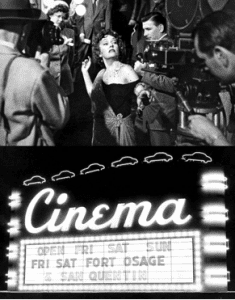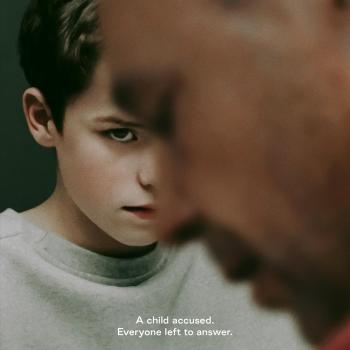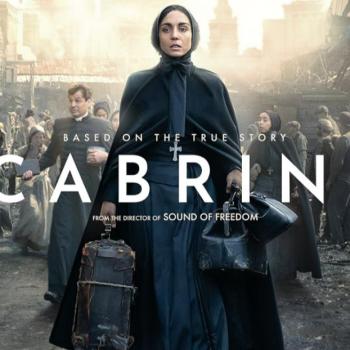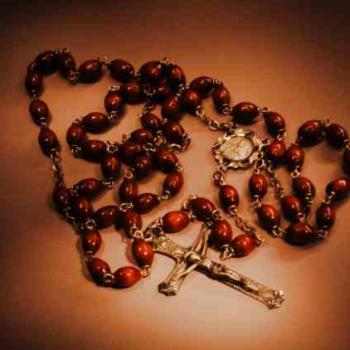This paper was written by Sister Nancy Usselmann, FSP in 2013 as a Church History project. It’s a good overview of the history of the Legion of Decency in view of the upcoming series on TCM “Condemned” that I will be hosting (all the Thursdays of March, 2016).
HISTORY OF MOVIE CENSORSHIP IN THE UNITED STATES
Long before the Catholic Church became officially involved in rating the morality in films, the Motion Picture Industry itself had developed it’s own form of self- censorship due to public protests regarding the trend of including morally objectionable material in movies. In 1919 the National Association of the Motion-Picture Industry (NAMPI) adopted Thirteen Points that became the guideline for excluding certain films or scenes in films because of their objectionable content. The first few decades of the Twentieth Century saw the development of each state creating its own censorship boards. This concern for what is morally acceptable in cinema was not only a Catholic issue, but the rapid development of this medium startled everyone who saw the reach and depth it could and would have on society.
In 1922, the big Hollywood Studios formed the Motion Picture Producers and Directors of America (MPPDA) trade association to advance their own business interests. However, it also took on the role of internal censorship and eventually created the Production Code, which remained in effect from 1930 to 1968. It was also known as the Hays Code after its first director, Will H. Hays. This Code was created as guidelines for producers and directors to more or less follow and was often simply ignored. In 1934, Joseph Breen took over the role of director from Hays and enforced a much more strict interpretation of the guidelines and censorship rules. Breen, a Catholic, became very connected to Father Daniel Lord, SJ and Martin Quigley, a prominent Catholic publisher, who co-authored the Production Code that would remain in effect for decades.

(qpmedia.com)

Even with the growth of internal and external censorship there was still, what seemed to be, according to Martin Quigley, a need for greater moral assessment of the movie industry. He expresses the power of the medium when he writes, “The motion picture has created problems which have not attended the development and extension of any other form of expression. This has been due to the circulation which the public’s favor has given to it, to the vividness of the medium and to its facility in thought conveyance and in emotional stimulus.” His concern for an enforcement of the code that he helped to create was not without justification. A call for a non-political entity to help with this moral assessment was insinuated.
Gerald Kelly, SJ and John Ford, SJ expressed in their article, producers needed an organized public call for moral standards so that they would overcome their fear that following a code of moral standards would make theirs films financial failures.3 The Catholic Church was a formidable group, more united than the Protestants and people of other faiths. Catholics were already organizing protests and boycotts at theaters that threatened the economy of the film industry, so it became clear to Catholic leaders that they needed to step in. After hearing an address of the Apostolic Delegate at a Catholic Charities convention in New York City in 1933, in which Archbishop Amleto Giovanni Cicognani encouraged Catholics in a call to action in all aspects of social life and called for a, “purification of the cinema which has become a deadly menace to morals,”5 the United States Bishops took action. Only six weeks later at their annual meeting did the Bishops reiterate the problem of immorality in the cinema and appointed the Episcopal Committee on Motion Pictures to organize and plan a campaign that would put pressure on the Industry moguls to follow the Production Code. The Legion of Decency was formed. Initially it included leaders of Protestant and Jewish groups, but later developed into a specifically Catholic organization since it was the largest membership.
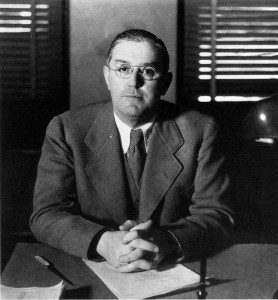
Through further protests and boycotts, the Legion would essentially force the industry to somewhat comply since these events shutdown theaters completely, unable to show good or bad films, and created an economic halt. Some Hollywood studios chose to comply rather than face bankruptcy. Yet, they felt they were giving up, “the freedom to deal with the full range of human subjects in an honest and straightforward way.”
Movie producers worked closely with Breen, who was rigidly enforcing the Production Code, but they did not realize that he was also working closely with the Legion of Decency and the United States Bishops Conference. All through Breen’s tenure, 25,000 films went through his censorship and viewing. Pope Pius XI eventually made Breen a Knight Commander of the Order of St. Gregory.7
According to the Chairman of the Episcopal Committee on Motion Pictures, Archbishop McNicholas of Cincinnati, Ohio, the main purpose of the Legion of Decency was to make American Catholics aware of the dangers present in immoral movies and to call them to action. The Legion called for all Catholics to make a pledge to not attend immoral films according to Catholic moral principles and to protest any movies that offend public decency.8 Every Catholic recited this pledge annually during masses either on or right before December 31st (other sources list December 8th as the annual pledge day.) This pledge encouraged Catholics to live by what they already profess in their faith—moral uprightness based on the natural law and God’s law.
The Legion’s purpose, in practice, became the classification and reviews of motion pictures. There were numerous people involved in writing reviews and lists of condemned films, specifically Fr. Fitzgeorge Dinneen, SJ in Detroit. Yet, the Legion formed its own review board made up of persons selected by the Bishops and composed of both priests and laymen. They used Martin Quigley’s book, Decency in Motion Pictures, as their guide in making judgments on films. A Legion classification of “B” meant that a film is morally objectionable. A “C” rating gave a film the feared condemned status and protests by Catholic groups.
Martin Quigley was the voice behind many of the Bishops’ statements and concerns about the motion picture industry. He believed that if the industry strictly adhered to the Production Code (which he helped to write), there would be a definite increase of moral standards in the movies and better entertainment for the public. The Bishops agreed. As they said in their statement about the of enforcement of the Code, it, “will materially and constructively influence the character of screen entertainment.”
The Legion even received confirmation by Pope Pius XI in 1936 in his encyclical, Vigilanti cura, when he wrote:
“Because of your vigilance and because of the pressure which has been brought to bear by public opinion, the motion picture has shown improvement from the moral standpoint: crime and vice are portrayed less frequently; sin no longer is so openly approved or acclaimed; false ideals of life no longer are presented in so flagrant a manner to the impressionable minds of youth.”
Although in certain quarters it was predicted that artistic values in the motion picture would be impaired seriously by the reform insisted upon by the “Legion of Decency,” it appears quite the contrary happened and the “Legion of Decency” has given no little impetus to efforts to advance the cinema on the road to noble artistic significance by directing it towards the production of classic masterpieces as well as of original creations of uncommon worth.
The work of the Legion also received appreciation from those in the industry itself, for a report from Hollywood stated that, “better pictures, morally and artistically, have been made since regulation began than in many years before.” And a noted film critic, Jimmie Fielder, wrote that not only has the Legion, “imposed an effective check rein on salacious pictures, it has also done much to raise the artistic level of all films.”
Not all were favorable toward the Legion’s work. Yet, at this early stage of its existence, it was more accepted in society than it would be two decades later when a revised code was required.
The Catholic Church’s general tenor towards the motion picture industry was to be both positive and negative. As Pius XI brought this out in his encyclical, Vigilanti cura, so did Pius XII when he stated that an ideal film should bring out the dignity of the human person while showing an understanding of human beings’ struggles and difficulties. Portraying moral evil is within the scope of good filmmaking as long as it is shown as such, an evil. He even said that there are films that necessarily portray the weaknesses and sins of ecclesiastical persons. In such a case, he said, let there be a distinction between the person and the office, the institution and the person.
The Catholic Church in the United States exerted such influence on the Motion Picture Industry since it was increasing in its reach across all of society with Catholics taking on important positions of power and influence in business, politics and education. The Catholic Church was becoming a dominant force in American society like it has never seen prior to this period. It is no wonder that the Legion of Decency had such an effect. However, in a few short decades, that influence begins to wane by the early 1950s. In the following pages, I will examine a few Hollywood films that created controversy over censorship and the Legion’s approach to cinema.
THE MIRACLE (1948)
One of the biggest controversies over censorship came with the film by Italian director, Roberto Rossellini, called The Miracle. Staring Anna Magnani and Federico Fellini, the story centers on a poor, mentally unstable woman in a small village. She
takes on odd jobs, often the lowliest, in order to have money to buy food. One day she is tending goats and comes upon a stranger, whom she believes to be St. Joseph. He drugs her with wine and then molests her. When she comes out of her stupor she declares she made ecstatic love to St. Joseph and so now bears a child, whom she names “the blessed One.” She believes that she is the Virgin Mary. The villagers laugh and jeer at her as she babbles on about her declarations. She runs away to the hills to escape their mockery and has her child in a storeroom near the church of St. Michael. Her love for her child provides her a moment of sanity.
The Legion of Decency found the film to be sacrilegious and overtly profane. Rossellini’s film, while receiving a pass from the Vatican, became a source of bitter controversy in New York, when Father Masterson of the Legion of Decency worked to get it boycotted and brought it before the courts over the issue of being “sacrilegious.” It went to the courts over which censor had the correct jurisdiction since some of the state censorship offices allowed The Miracle to receive its license and some did not. The Legion, in the meantime, was boycotting the film and putting pressure on the courts to rule in favor of the “sacrilegious clause.”
Francis Cardinal Spellman of New York became involved in the controversy and called for its condemnation. Rossellini sent Spellman a telegram stating that he created the film:
“…With the humble spirit of brotherhood to show that the absence of charity in the hearts of men had given way to an immense darkness and sorrow…men are still without pity, because they still have not come back to God, but God is already present in the faith, however confused, of that poor, persecuted woman, and since God is wherever a human being suffers and is misunderstood, ‘The Miracle’ occurs when at the birth of the child the poor, demented woman regains sanity in her maternal love.”
Masterson and Spellman totally misread the entire script and avoided the explanation given by Rossellini himself. His films were all filled with Christian symbolism and all told of the humble and disgraced as the ones God loves and those he is closest to. Rossellini admitted that some of the things Nanni (the main character in The Miracle) believes are “blasphemous” but her faith is real and miraculous for her who finds new life and new love with the birth of her child. Even though Spellman condemned the film, three out of four people in the Motion Picture Division approved it and said it simply showed the inhumanity of people toward one another.15 Martin Scorsese, a Catholic and a filmmaker himself, said that Rossellini proposes in The Miracle that Christianity has no meaning if it cannot accept sin and subsequently allow for humanity’s need for redemption.
In 1951, the New York Film Critics Circle gave its award to The Miracle risking the wrath of Spellman and possible picketing. To avoid the demonstrations, they moved the event to the top of Rockefeller Center’s Rainbow Room.17 The Catholic Church’s influence in Hollywood slowly starts to crumble within such an increasingly secular society. The New York court of appeals ruled in favor of the local Board of Regents for providing the licenses for The Miracle to show in the theaters, which was another blow to the Legion’s power. This ruling caused the issue to go to the Supreme Court of which the Chief Justice ruled that motion pictures fall well within the First Amendment protection and cannot be subject to unrestrained censorship.
THE MOON IS BLUE (1953)
Based on the 1950 stage play by F. Hugh Herbert, The Moon Is Blue, set in a genteel, middle-class background, gives a comedic and wistful manner to a plot about seduction and virginity. This was the first time the words “virgin,” “seduce,” and “pregnant” were used in a film. A successful architect (William Holden) meets a young woman (Maggie McNamara) at the top of the Empire State Building and encourages her to join him for a drink at his apartment. His intentions are to seduce her, but she is interested only in declaring her views that men get bored with virgins and usually have mistresses. Despite her declarations she remains a virgin and even obtains a marriage proposal from the unsuspecting and admiring architect. Because of the immoral, yet likable nature of the young woman, the Production Code office gave it a thumbs down. The director, Otto Preminger, would not let it rest with that judgment. Even though his actress declares at the end of the movie that leading a moral life limits living fully, he still brought it before the New York Appeals Board.
The Legion, however, wielded its strength to denounce this film that, as Quigley would say, advocated “free love.” Monsignor Thomas Little, the executive secretary of the Legion, wrote that, “the pattern of living and behavior is so attractively portrayed as to arouse in the mind of the viewer an acceptance of what might easily lead to a breakdown in public and private morality.” With Cardinal Spellman’s encouragement the letter writing campaigns and picketing of theaters took shape throughout the country. After the Supreme Court case of The Miracle, local and state judges were striking down ordinances that allowed for local review boards to ban certain films, thus lessening the power of film censorship. Not only was the industry fighting back but also there was disagreement among the review boards and within the Catholic Church over the film. A review in the Oregon-based, St. Joseph’s Magazine, praised the film as one of, “the brightest and most originally charming comedies of the year, with its impudent wit and some wise common sense concealed beneath a candied surface.” Other church members saw the film as against promiscuity and promoting marriage. Still, the Legion held to its condemnation of the film and 1954 saw the beginning of the fall of the Legion’s influence through significant defeat over this film.
The Legion of Decency tended to focus on the negative aspects of films, rather than promote the positive and educational aspects of a movie. Yet, all that was changing since Pius XII issued an encyclical called, Miranda Prorsus, “Remarkable Technical Inventions.” In it, the Pope said that there is a need to classify the morality of content, but “this necessary action must be accompanied by an educational endeavor in the strictest sense.” He said that the cinema is a “privileged instrument put providentially at the disposal of man to make him participate in an authentic and specific culture.” These inventions are gifts of God and from them, “very many benefits as well as very many dangers can arise, according as men make use of them.” Soon the tide was turning in how the Legion used its influence with the motion picture industry.
THE FRENCH LINE (1954)
A Texas millionairess, Mame Carson (Jane Russell) is bored with her many suitors who are after her money. She takes a trip with her fashion designer friend across the Atlantic to France where she poses as a fashion model seeking to find true love. While on the ship, she falls for a French playboy, Pierre, who is really hired by her guardian to keep all the money hunters at bay. This musical film, made by Howard Hughes, was to show off the beauty of Jane Russell and her seething sexuality. The film was shown in 3D making Jane’s curves even more visible. The script was shallow and mild, but the visuals were what gave the censors pause for concern.
Breen said the film needed extensive editing to receive the seal of approval. Hughes wanted to release it anyway. It debuted in St. Louis, Missouri at the Fox Theater without the Legion’s rating or review. It brought in great revenues. But the Catholic Church was to halt its continued showings by Archbishop Ritter’s letter sent to every church to be read out loud on that following Sunday condemning the film for its salaciousness and forbidding attendance under pain of mortal sin. The film was withdrawn from St. Louis, yet it was set to go nationwide. Hughes adjusted and cut the film according to the censorship restrictions of the areas where he wanted it released. He actually cut more than what Breen requested. With the edited version, the crowds thinned and he lost bookings in many locations. In this case, the pressure of censorship did halt a film from its national release.
The motion picture industry was losing profits to the newer technological advancement—television. Theater attendance was dismal and every gimmick was tried—3D, Odorama—without success.25 The movie-going audiences were changing to less family-oriented to teens and young adults. The content of the films needed to mature along with the audiences to capture their attention. The industry started giving audiences what they wanted to the consternation of the Legion and other church leaders.
BABY DOLL (1956)
Based on a Tennessee Williams play and directed by Elia Kazan, this film was the story of a young, precocious, sexually charged, poor white trash girl from the South.
She is married to Archie, a man in his forties while she is nineteen. She tells him she will not consummate the marriage until she is twenty, making the husband half-insane with lustful desire for his wife. Baby Doll (Carroll Baker) is emotionally immature and sleeps curled up in a crib, but all the while seductively prances about in her lingerie. A rival cotton gin owner to her husband captures her attention. When Archie accuses Vacarro of stealing his business, Archie sets fire to Vacarro’s gin. Vacarro comes around soliciting Baby Doll’s attention while trying to secure a confession from her that her husband is responsible for the arson. They become intimate and when Archie finds out he tries to kill Vacarro. Instead he is caught and sent off to jail.
The Legion condemned it immediately and considered that an economic blow was the only way to slow down the film’s progress. Cardinal Spellman pronounced at St. Patrick’s Cathedral that Catholics, under pain of sin, must avoid seeing the film.26 He accused the filmmakers of “corruptive moral influence.” The Legion censors stated that the film was “morally repellant” and that it included an “unmitigated emphasis on lust.” Msgr. Little, the Legion’s director, called for a full-out display against this immoral film and said, that “should this picture have commercial success it would strongly weaken the hands of the Legion in its negotiations with the major producing companies of this country.”
The Legion stayed strong in its protests and Catholic periodicals and newspapers also gave it a condemning rating. Even though the film still showed at thousands of theaters across the country, the Legion’s work did hurt it financially. It could have grossed much more than its mere $2.3 million in domestic revenues. Kazan was not happy and admitted that, “The Cardinal’s attack hurt us. There’d be one good week, then a quick slide down. I never made a profit.”30 Even thought the Legion’s reach was lessening, it still had some staying power in the mid 1950s.
LOLITA (1961)
A firestorm of outrage came at the publication of the novel, Lolita, by Vladimir Nabokov in 1958. The story circles around a British Professor of French literature, Humbert Humbert, who is a psychopathic pedophile. He takes up residence at the house of Charlotte Haze as a renter and becomes instantly enthralled with her 14-year- old daughter, Lolita. He even marries Charlotte so he can be near Lolita. When her mother is killed in a freak car accident, he picks up Lolita at camp and begins a feigned relationship of concerned stepfather while really acting as a sexual predator. Later he finds out how unvirtuous Lolita is as he discovers the tricks of her admirer, Clare Quilty. Humbert kills Quilty in a rage and ends up in prison.
The successor of Hays and Breen in the Production Code office of Hollywood, Geoffrey Shurlock, was less strict in applying the guidelines of the Code and interested in the treatment of controversial subjects,31 yet he was also concerned about how this film would be taken by the public. Bishop McNulty, Chairman of the Episcopal Committee for Motion Pictures, noted that the film offered, “nothing but two and a half hours of exposure to an unrelieved concentration on sexual depravity which no amount of so-called restrained treatment could alter.”32 The producers were finding that a C rating from the Legion would hurt the film’s chances at the box office and so sought advice.
In a twist of fate, Martin Quigley, the rigid moralist, strongly disagreed with the Bishops and the Legion’s direction after a break in opinion about the film, La Dolce Vita by Fellini. He broke with the Legion. Since his publishing business was deteriorating, he began offering himself to Hollywood producers to review scripts with the view of the Legion and Catholics. Stanley Kubrick, director of Lolita, hired him. Quigley’s suggestions for alterations were sometimes accepted, sometimes not. He was not a censor but a consultant. After many edits, the film was accepted by the Legion as for adults only, yet morally non-objectionable. Many people who saw the film found it harmless and offering a moral lesson.
Father Sullivan was instrumental in obtaining a change of mind from the Legion.
He said that audiences have become more mature and selective. He said that Americans are no longer passive recipients of all the media messages as in previous times; instead, they exercise more judgment about the films they watch. People did not want all their movies censored and so the Legion was moving to allow adults to see films that are appropriate to them and help prevent children from seeing films that were inappropriate for their age group. Sullivan was calling for the initiation of a rating system by the movie industry.
The dawn of the 1960s, with its societal changes and brewing discontent with authoritative structures, made it clear that personal opinion and not necessarily morality is what was determining what films people watched and whether they considered them moral. The Legion was changing in its perspective and had to adapt to the changing times. It was slowly moving away from censorship of films and more toward a ratings system for age groups and that restricted attendance of younger audiences to films with adult subject matter.
CHANGING TIMES
The Catholic Church’s view of cinema was constantly changing and adapting to the times. The international cinema organization, Office Catholique Internatioanl du Cinema (OCIC), founded in 1928 dedicated itself to studying the cinema as a form of international communications. After World War II, it reassembled in 1947 to continue this study. The 1957 meeting was in Havana, Cuba, and the Pope urged the group to broaden among Catholics a real appreciation of film by practical and theoretical instruction.35
Members of the Legion of Decency in New York attended, specifically Monsignor Thomas Little and Mrs. Mary Looram. Jack Vizzard of the Production Code Administration also attended. Quigley refused to attend since he saw OCIC as infiltrated by liberals who subvert moral values. His views at the Legion did not correspond with OCIC. He said that the priests at OCIC did not grasp the “immediate moral and social problems of the cinema and how the Catholic influence might be brought to bear on a solution of these problems.” Quigley was afraid that the meeting in Havana would bring about an approach of praising good films and seeing films that presented adult themes with much a much more liberal view.
During the meeting in Havana, Msgr. Little stood up to explain how the Legion of Decency works to give a moral voice and good moral values to the movie industry. It came across as extremely rigid and triumphalist. Catholic leaders from around the globe roundly mocked him. One Dominican priest from Belgium accused him of imposing a morality that eliminates sin and sarcastically said this was so typically American.
Pius XII, in his encyclical letter, Miranda Prorsus, was calling for education and formation of the spectators in understanding this art form. This document encouraged Archbishop William Scully, the chairman of the Episcopal Committee on Motion Pictures to call for a change of perspective. He said the role of the Legion is not to be a censor but to give a “moral appraisal of motion pictures.” He emphasized that the Legion is not to take a solely negative approach, but that work for the affirmative must also be advanced.38 According to this new approach of the Vatican, Scully called a meeting to reevaluate the motion picture classifications given by the Legion. This loosening of restrictions was accepted by the US Bishops and took immediate effect. Quigley was furious and saw this as a beginning of the end of morals in the country and became at odds with the US Bishops over morality in the movies.
It became clear that, “given a free choice, sincere, intelligent Catholics, clerical and lay, could no more agree on what was moral entertainment than could any other segment of the population.”39 Father Sullivan revised the Legion of Decency pledge that now encouraged Catholics to see good films and warn against bad films responsibly and civilly. By 1965, the US Bishops moved to change the Legion’s name to National Catholic Office for Motion Pictures (NCOMP).
The Movie Industry finally created a rating system in 1968, but in 1966 it effectively ended over three decades of industry self-censorship. It created the Code and Rating Administration (CARA). By 1970, the industry was on its own and no longer paid attention to NCOMP or any other organization that tried to limit its productions or edit out its content. By 1980, Father Sullivan announced that NCOMP would no longer publish reviews. What originally created such a fury in the film industry back in 1934 went away without any protest. With or without censorship and the Legion’s existence the film industry is still all about profits. As Gregory Black says, “Hollywood films were first and foremost entertainment, and because of the tremendous cost of making films the first priority was, and is, reeling in an audience large enough to make a profit.”
The Legion’s goal in providing a moral compass for Catholics to navigate the Movie industry was realized for the many years of its existence. Even though some may protest that it went beyond this role as moral watchdog to effectively changing the industry to its liking, it still did provide a service to those who were willing to listen to its advice. The imposition of “pain of sin” by some Bishops upon those who watched condemned films was perhaps not always the appropriate approach to these cultural artifacts. Yet, it often created such a flurry that their strong condemnations put an economic dent in the filmmakers’ pockets whose productions were offensive. The Legion, for all its flack over its censorship abilities, did successfully keep the number of condemned films between 1934 and 1953 with The Moon Is Blue debate, to a minimum. The few that were labeled condemned were eventually altered so as to receive a favorable rating by the Legion and subsequently released on the silver screen.
(Note: NCOMP was succeeded by the USCCB’s Office for Film and Broadcast until 2008 when following controversy over “The Golden Compass” it was closed. Movie reviews with classifications are now published through the Catholic News Service of the USCCB.)
Bibliography
Black, Gregory D., The Catholic Crusade Against the Movies, 1940-‐1975, New York: Cambridge University Press, 1997.
Johnson, William Bruce, Miracles & Sacrilege: Roberto Rossellini, the Church, and Film
Censorship in Hollywood, Toronto: University of Toronto Press, 2008.
Kelly, Gerald, SJ and John C. Ford, SJ, “The Legion of Decency” Theological Studies 18 (Sept.
1957), 387-‐433.
Quigley, Martin, Decency in Motion Pictures, New York: Macmillan, 1937.
Skinner, James M., The Cross and The Cinema: The Legion of Decency and the National Catholic
Office for Motion Pictures, 1933-‐1970, Westport, CT: Praeger Publishers, 1993.


